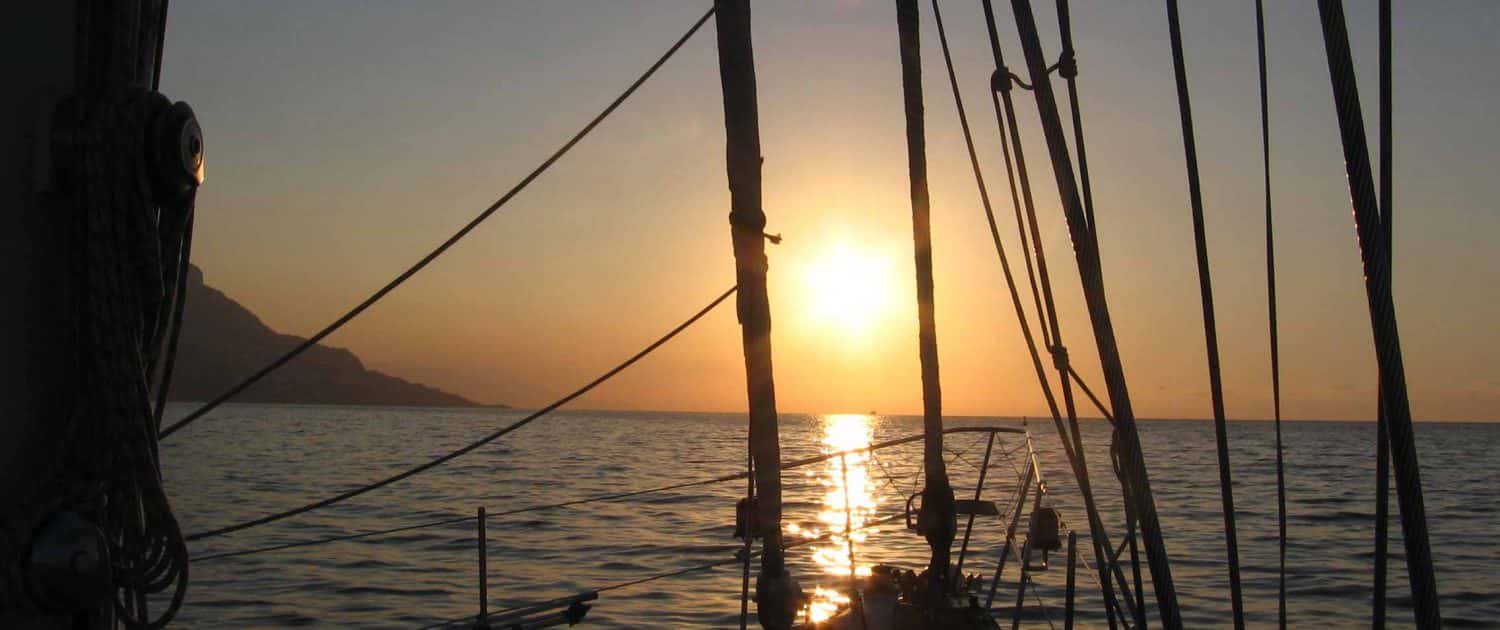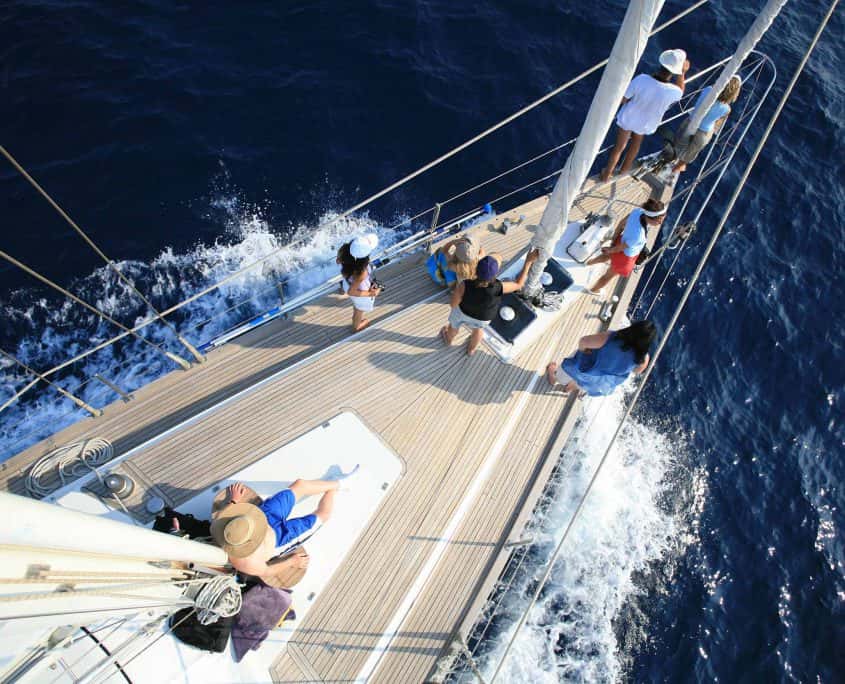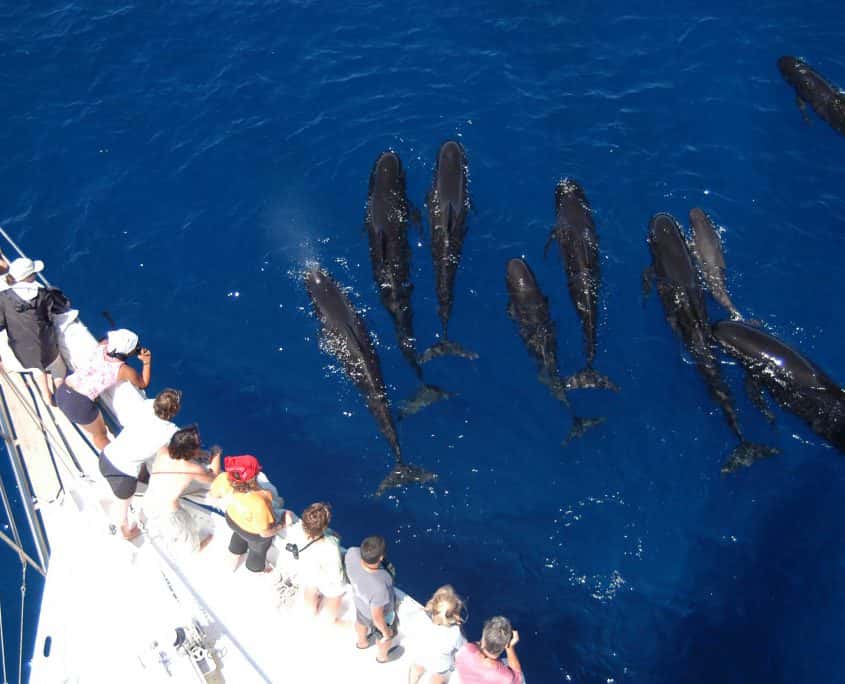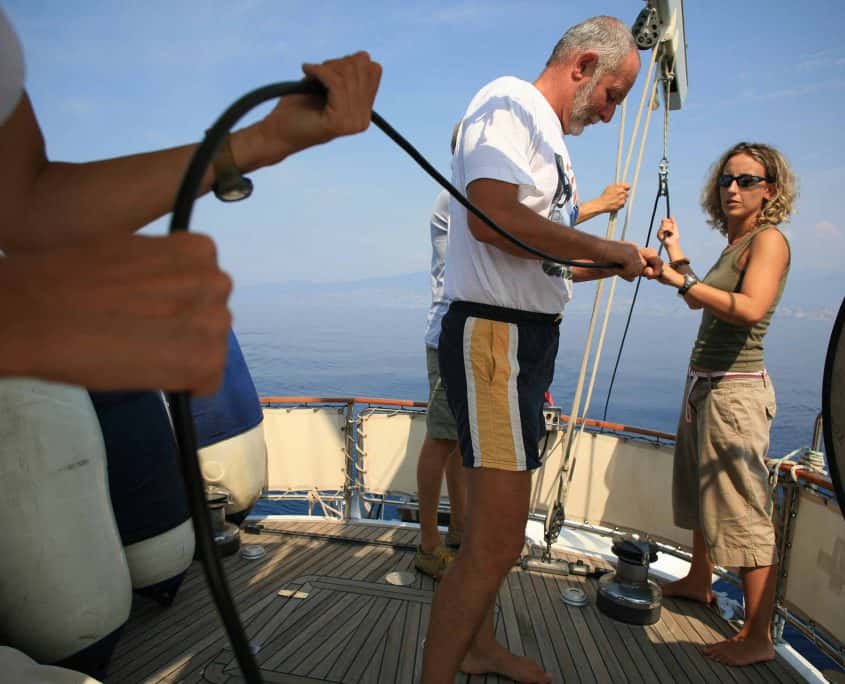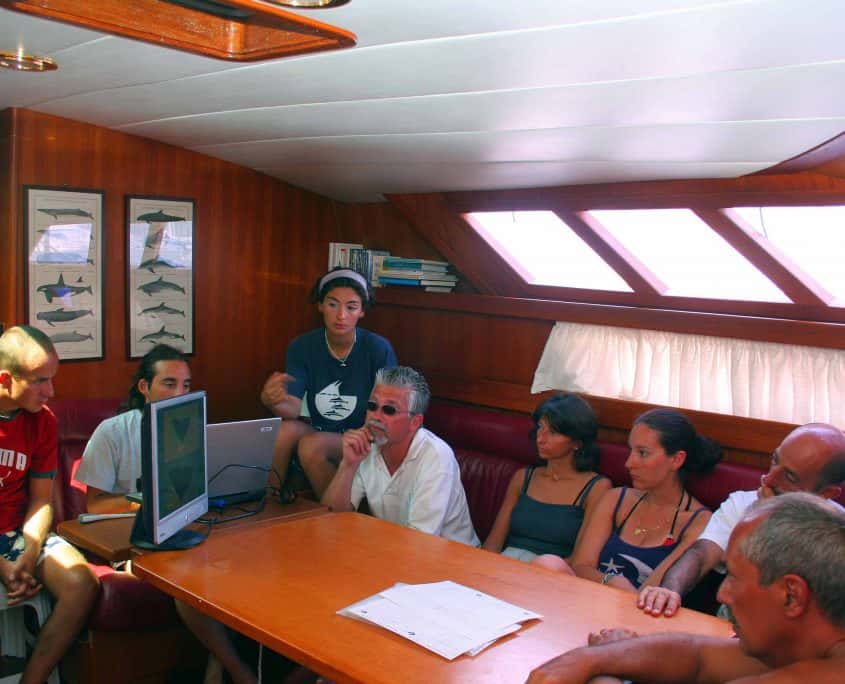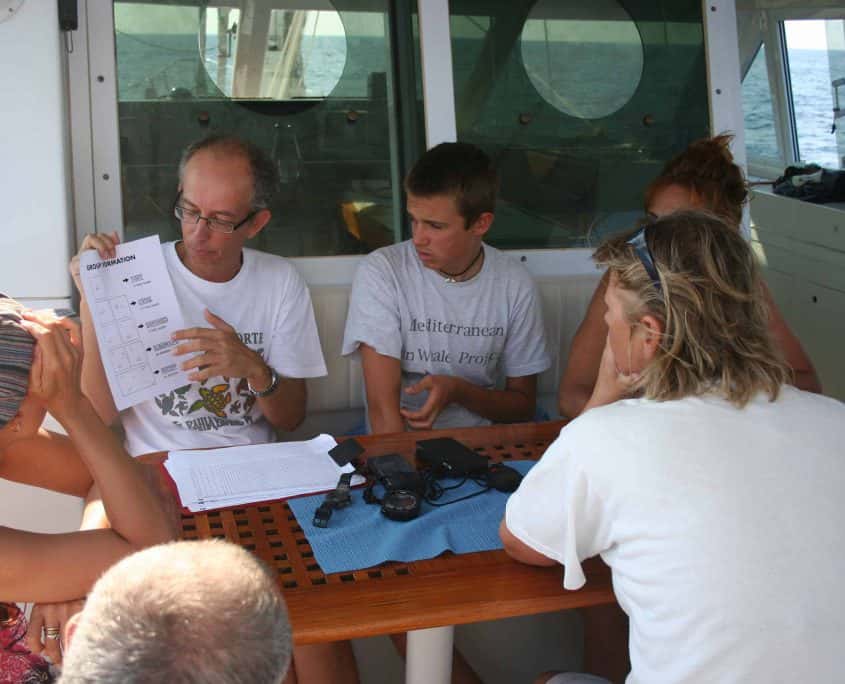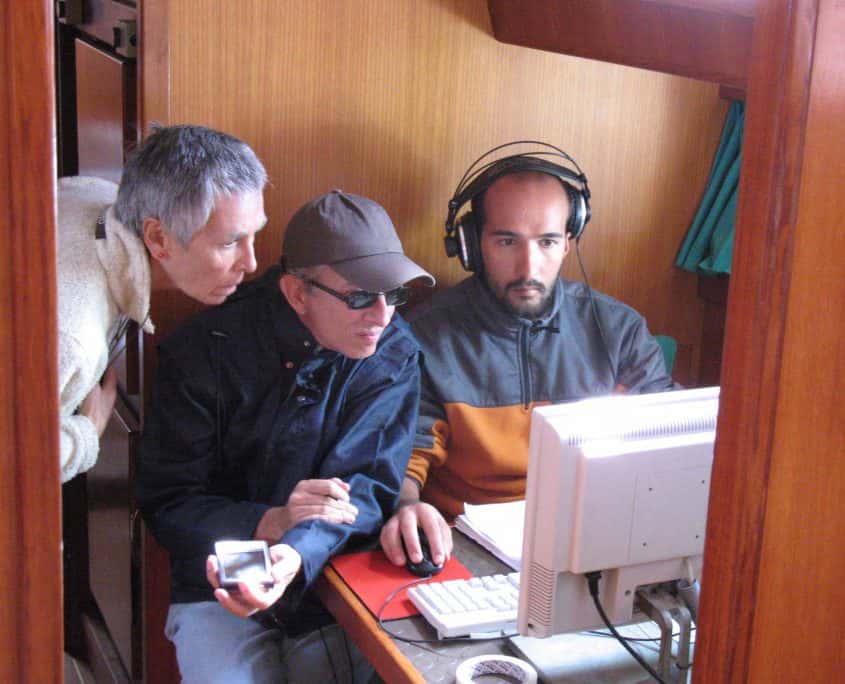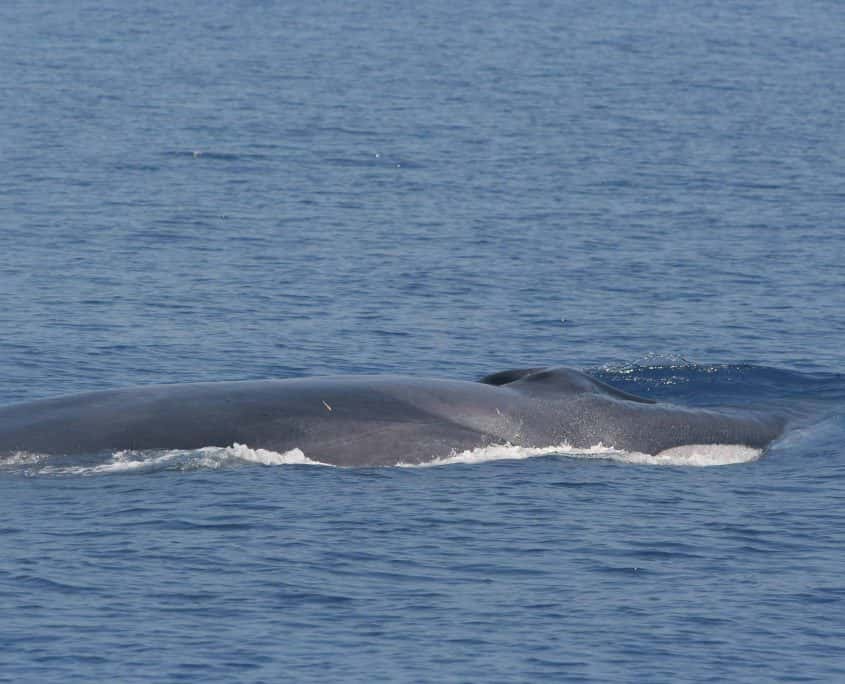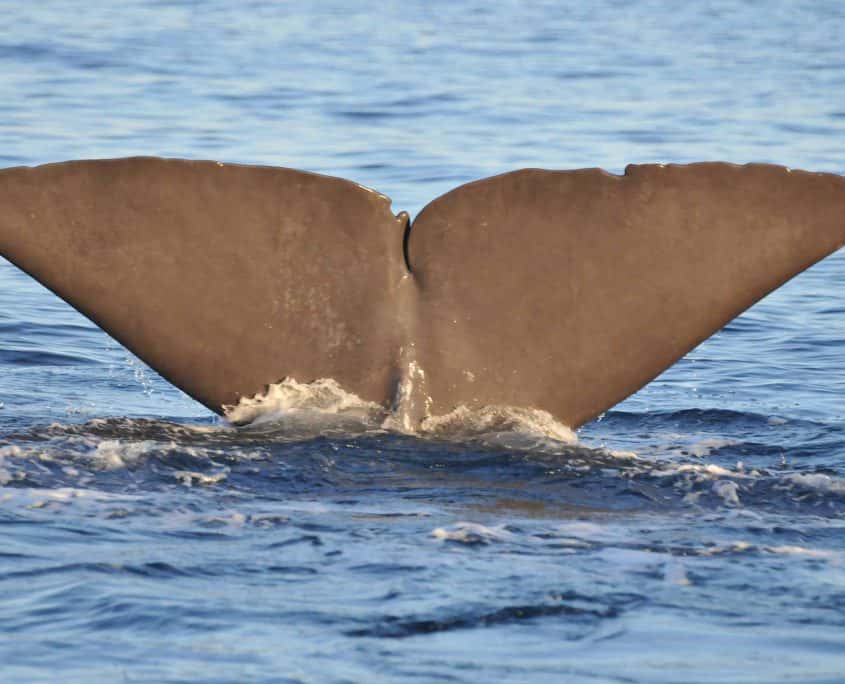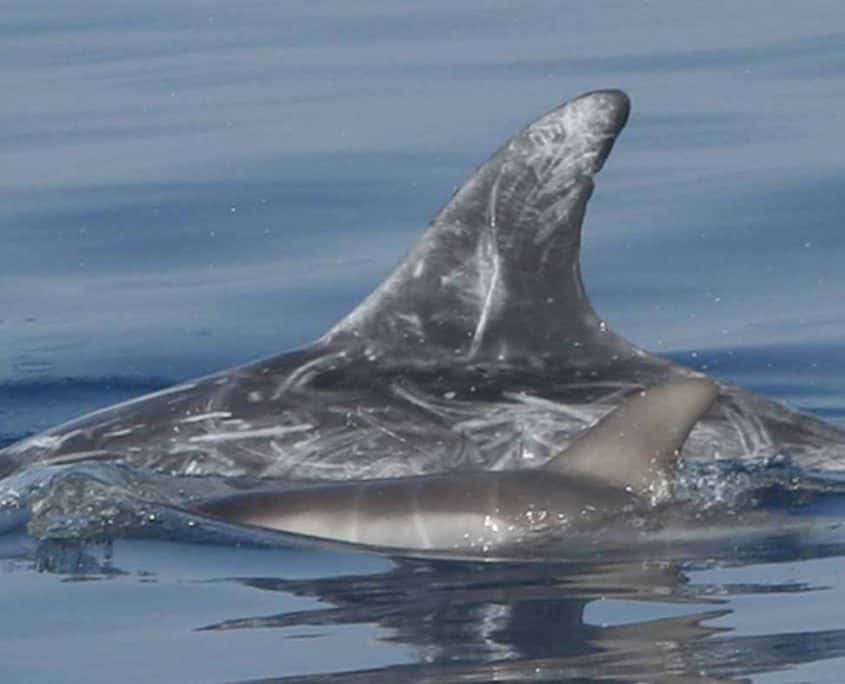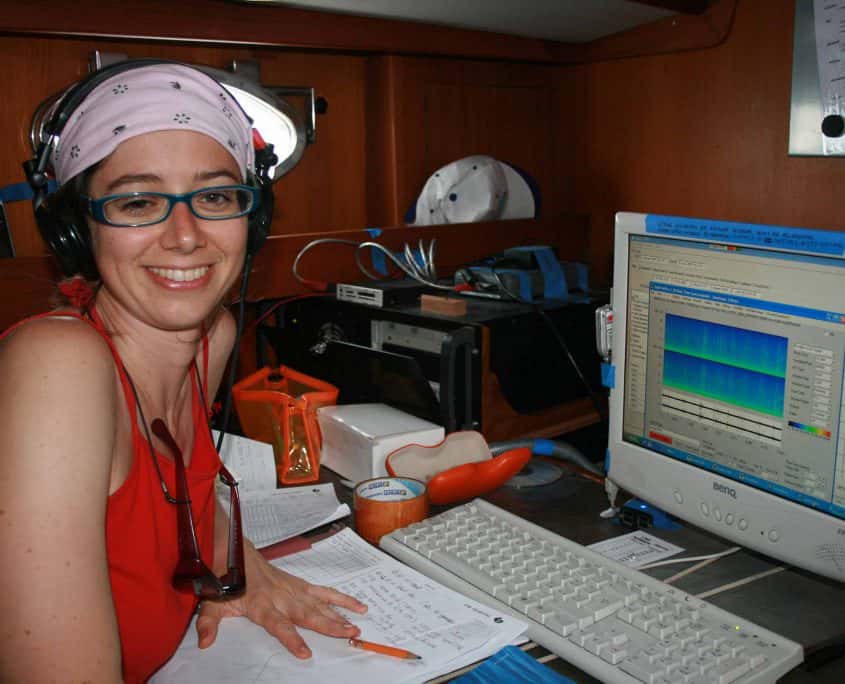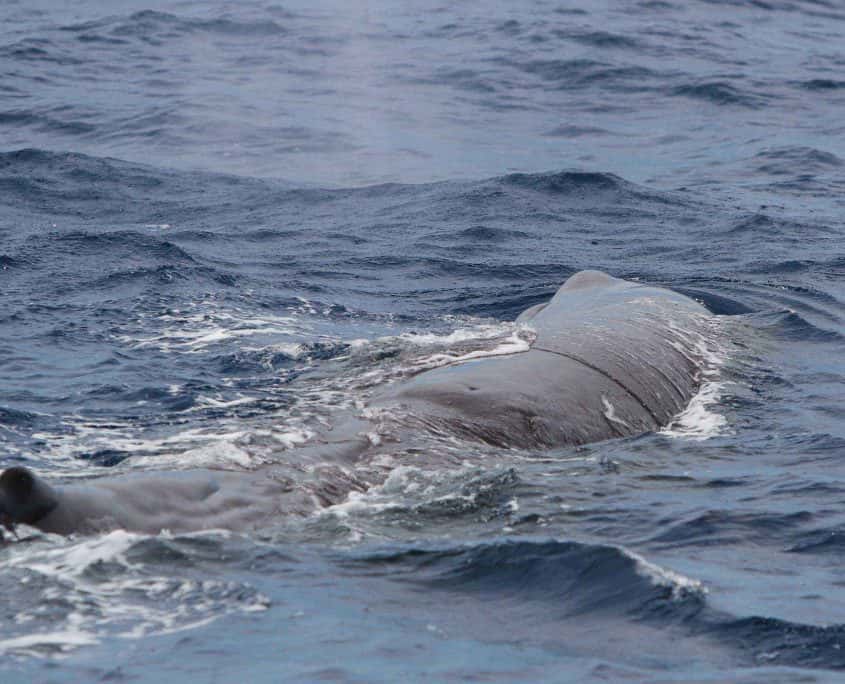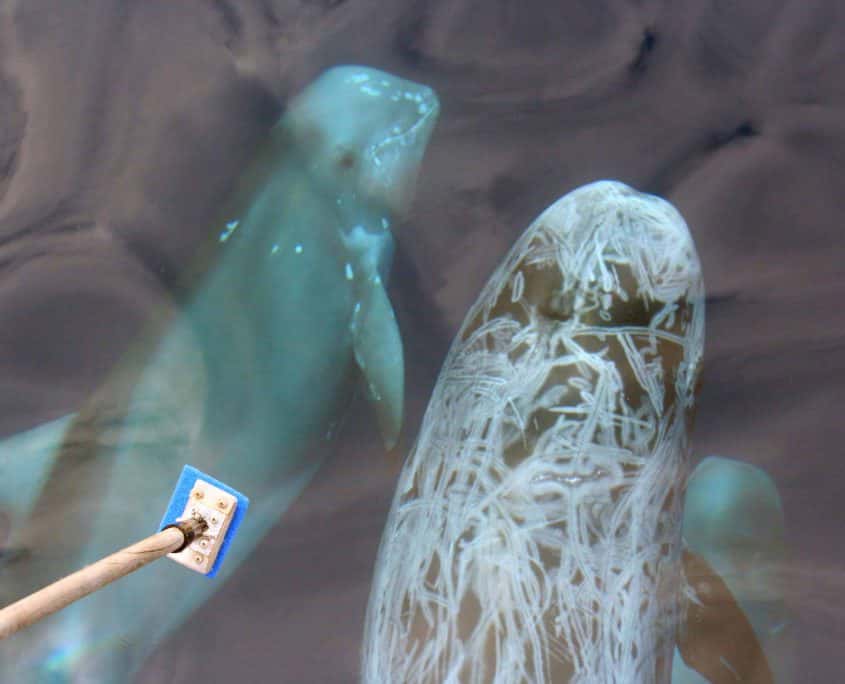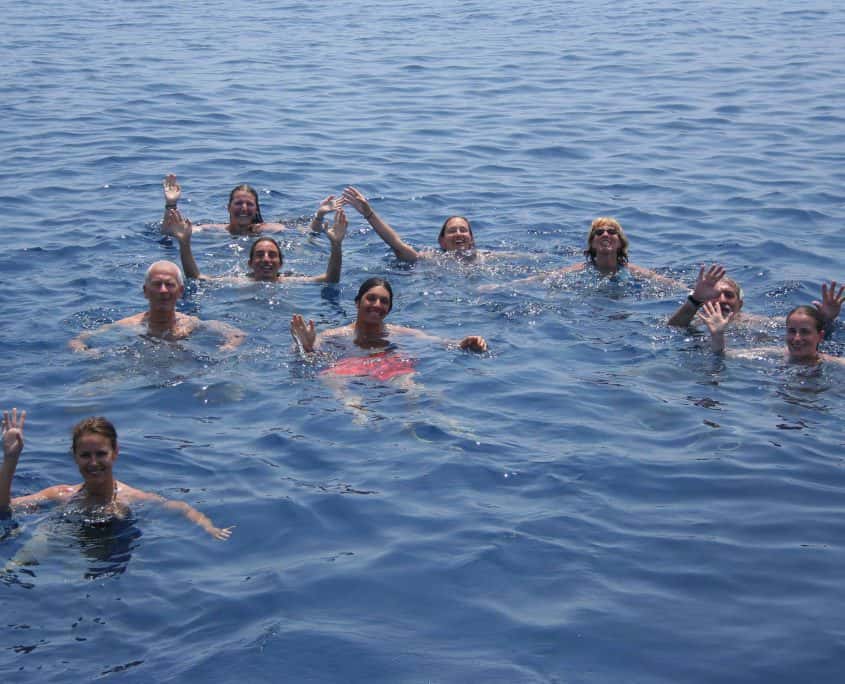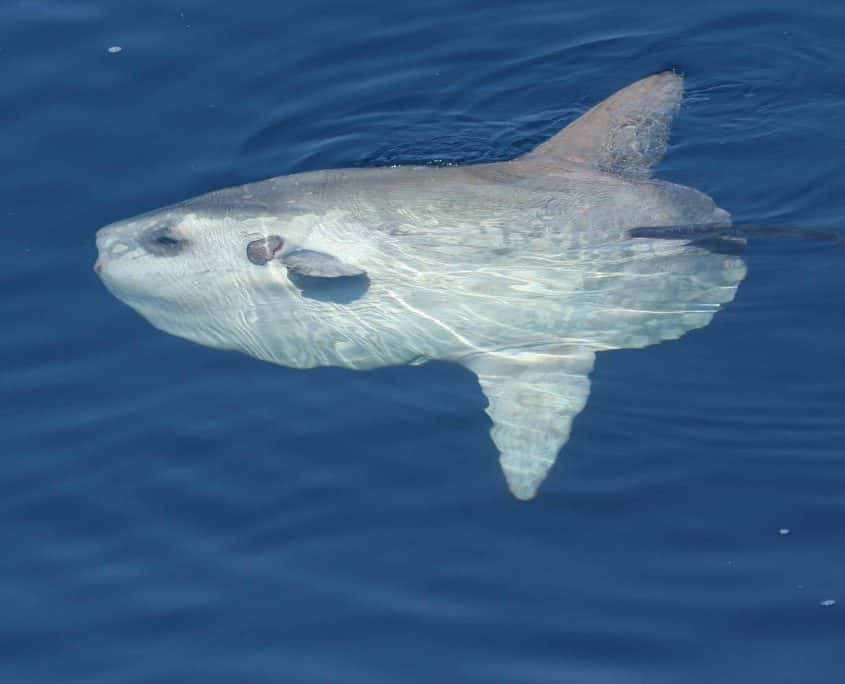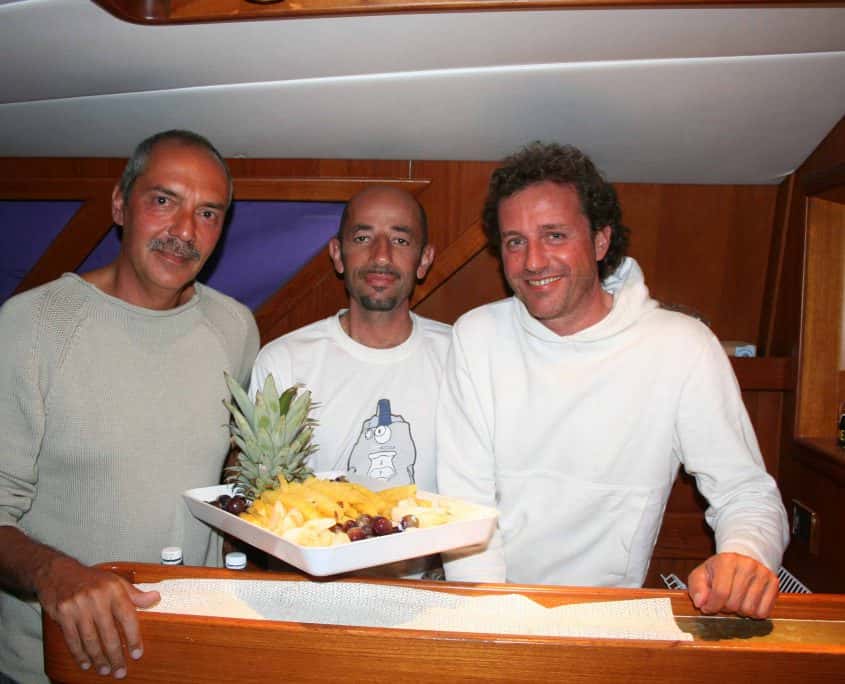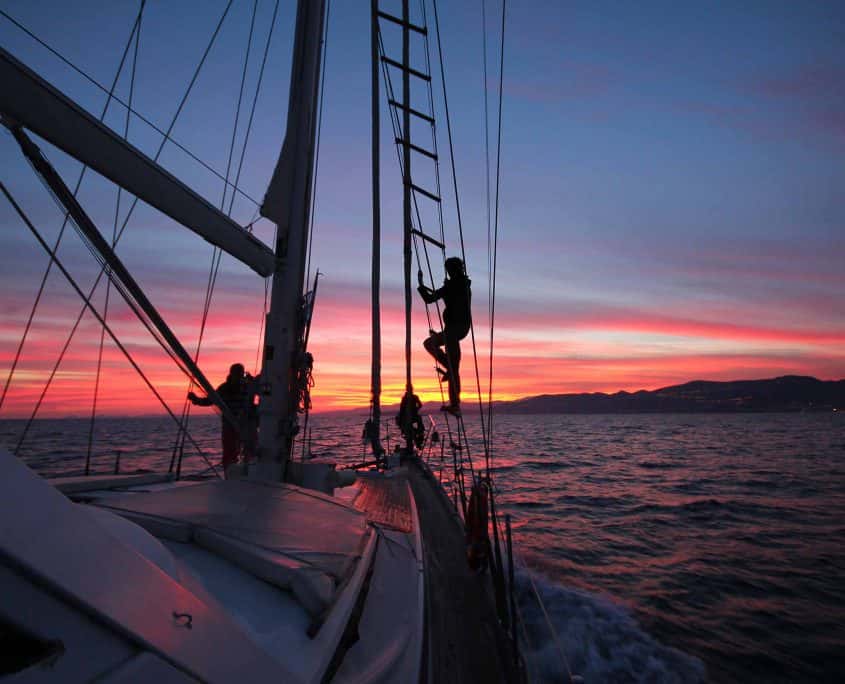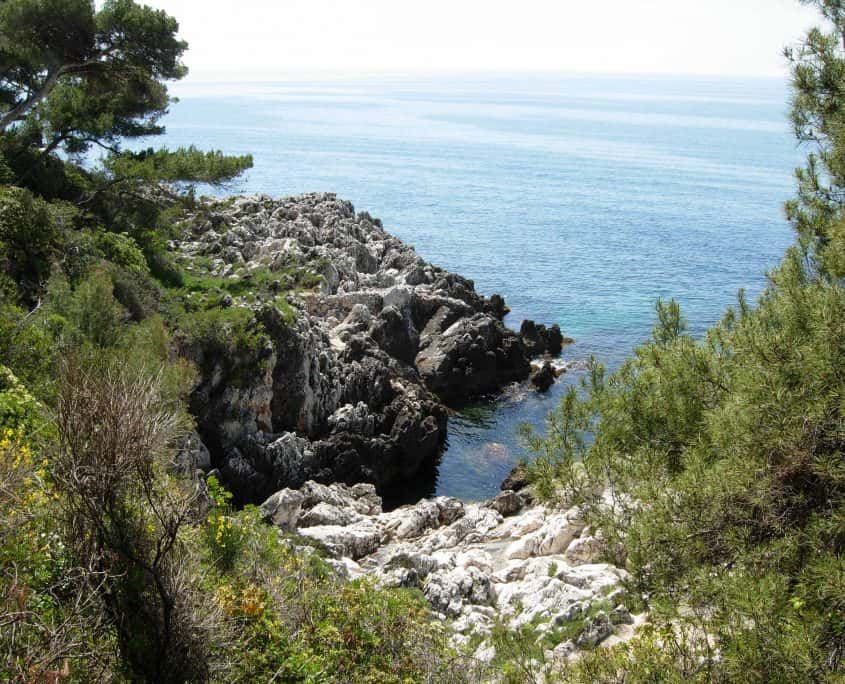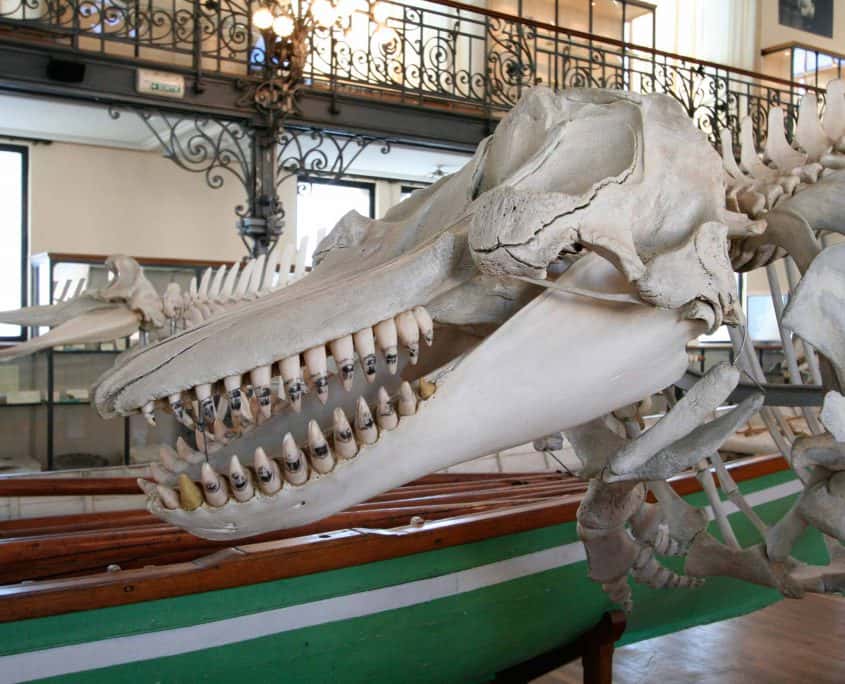Living on board, participants will help researchers collecting data on whales and dolphins in the Cetacean Sanctuary
Cruises are quite different from simple whale watching: you will be involved in all aspects of the fieldwork, although you need no previous experience
The Cetacean Sanctuary Research (CSR) Project seeks people willing to help with the collection of data and also with various other aspects of the fieldwork and the life on board. Researchers will be doing informal lectures on board, in order to allow everyone to participate to all activities and to understand the goals of the studies. Here is what you should expect living on board the motorsailer “Pelagos” with the scientists in the Cetacean Sanctuary.

